We Test Hookless
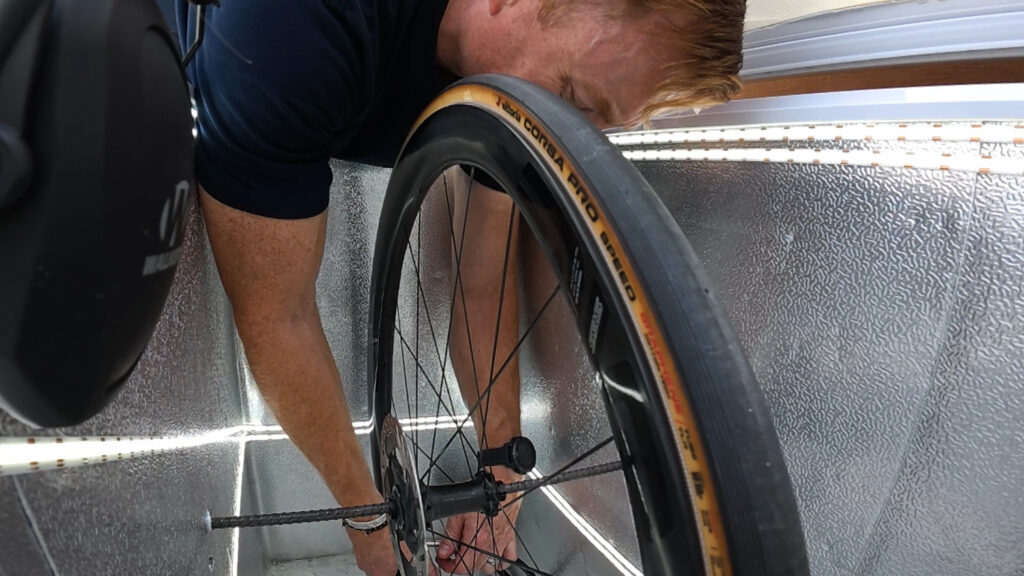
Since 2019 we have been covering this topic. While we have done a pretty good job at explaining the pros and cons of what we believe is the future of road wheel technology. It’s no secret that we at Slowtwitch aren’t as up in arms about hookless rims as others.
Let’s start with some basic history.
We all know that hookless tech isn’t new. It’s been the standard for the entire auto industry for over 60 years. The first cycling hookless wheels made their way to the mountain bike scene in 2014. The technology followed to road wheels around 2018, which, of course, caused some head turning. Some of it was justified, while others were skeptical due to pure misinformation that had ripple effects.
The new technology required approval from the biggest governing body of tire standards, the European Tyre and Rim Technical Organisation (ETRTO). Their testing protocol, or lack thereof, is what we know today as the standard, or recommendations, for most tires and wheels. This is not a rabbit hole we are going to go down in the article, but one that we will go down in part three of this testing series.
And, if you want any more information on hookless, we have a page started for this.
I really didn’t start to look at hookless tech in road, and some of the concerns around the wheel / tire combinations, until late 2022. It was about the time I was doing more reviews, and started to learn about the big changes some of the most iconic triathlon wheel brands were making.
This article is not meant to be a deep dive into the debate of hookless versus hooked wheels, but simply the start of a series of self-tested discovery. This is a simple personal study of “what if?” I wanted to examine the biggest concerns with hookless technology that some of our forum users expressed to us. We had some very aggressive forum users tell us about their concerns, but very few were willing to do any testing. So we are showing them that we’re both listening, and willing to do the work.
Our Testing Protocol
Before I came up with the protocol, I called ZIPP, CADEX, and spent a day with ENVE. I asked them all what they did for tests. Of course, while all of them test and test, their tests are all different. The things in common are the things I used for our protocol:
#1 Seat before test
#2 No sealant is used
Let me start by staying I understand the concern people have with hookless. I really do. I have seen tire blow offs, just like I have seen wheels implode. I have had these things happen to me personally. The reality is that if you don’t understand the technology, and you don’t follow the “guidelines,” bad things can happen. Personally, I feel my approach is different to others because I don’t allow for someone’s lack of understanding to create bias. For example, just because someone isn’t ready to take the extra steps to ride hookless safely doesn’t mean (as far as I am concerned) that hookless isn’t safe. It simply means there is an educational issue more than a safety issue. I tend to look at this issue the same way I do other cycling components – for example, torque specs on carbon posts, or some of the untested, 3D printed, front ends people are putting on their bikes. It all sits in the same bucket – the need for “education” rather than fire and brimstone. So, when I say that Slowtwitch is doubling down on hookless, it is more of an educational stance than anything else.
So, when thinking about how we should do these tests, I really went back to that concept. And this is really to the forum-user’s credit. What would happen if someone didn’t know they had a hookless wheel and treated it like a normal tubeless wheel from five or 10 years ago? So, in other words, let’s take a user that uses a 25 mm tire with 95 to 100 PSI as the “norm.”
Even though we are more than five years into this, and it seems to be the talk of the town, and people should have a better understanding, lots don’t. Which is why I can see lots of people following that thought process – “I bought a bike and I want to ride a 25 mm tire at 95-100 PSI.
Polling Data
Much of this comes from personal experience. I’m still shocked that even some pros are riding on hookless rims and still don’t know what they have. Is this a hookless issue or an information issue? (Who knows.) The last time this topic blew up on our forum, we decided to do a quick poll. I asked three multiple-choice questions
Do you believe that hookless wheels are unsafe, or simply not for you?
| ANSWER | % |
|---|---|
| I don’t understand what the fuss is about. | 45% |
| They’re just not for me. | 28% |
| They are a safety hazard. | 27% |
If given the choice, you prefer to ride a wheel that is:
| ANSWER | % |
|---|---|
| Clincher | 45% |
| Tubeless Hooked | 34% |
| Tubeless Hookless | 11% |
| Tubular | 10% |
Be honest: do you know how to change a flat on your bike?
| ANSWER | % |
|---|---|
| Yes | 94% |
| No | 6% |
What this data told me is that:
#1 People really don’t understand, or care to understand, about hookless rims, and the majority of them still aren’t ready to use the technology. And my gut feeling was wrong – I figured that about 15 percent of the people polled wouldn’t really know how to change a tire. Which means we have an educational opportunity. Not just in hookless technology, but with tubeless wheels overall, along with some other simple things, like changing a tire.
#2 10 percent of Slowtwitchers are going to have to make some purchase decisions soon because tubulars are dying, as are 25 mm tires.
Now, back to testing
Testing protocol
Based on user sentiment, industry conversations, and our personal desire to spend the time, we took an old freezer and converted it into a “blow off chamber.” The idea wasn’t to measure at what point a blow off happened, but more so to simulate someone (who doesn’t know any better) installing and seating a tire, then getting ready to ride. We took things to the extreme because … why not? After all, we bought the ear protection and built the chamber so … LFG.
First we would seat the tire onto the rim – without any sealant. Then we would deflate the tire and install the wheel in the chamber, making sure that the wheel was suspended. Then we would use a compressor and gauge to slowly inflate to the maximum pressure for our test – between 118 to 120 PSI. (I give a range because of the type of gauge we used.) And that was it. We didn’t wait for hours, or days. We simply followed that protocol and moved onto the next.
We had lights and cameras on every wheel and tire in hopes that, if something happened, we would be able to see at what point it did. This took three days of testing.
Im not going to lie – it’s nerve racking waiting for a massive shot gun sound to go off. Even though you have a chamber and ear plugs, you are still about three feet away from what could be a very loud bang. But, as the tests went on, we just kept moving forward as the lack of that “bang” continued.
WHAT WE TESTED AND WHY
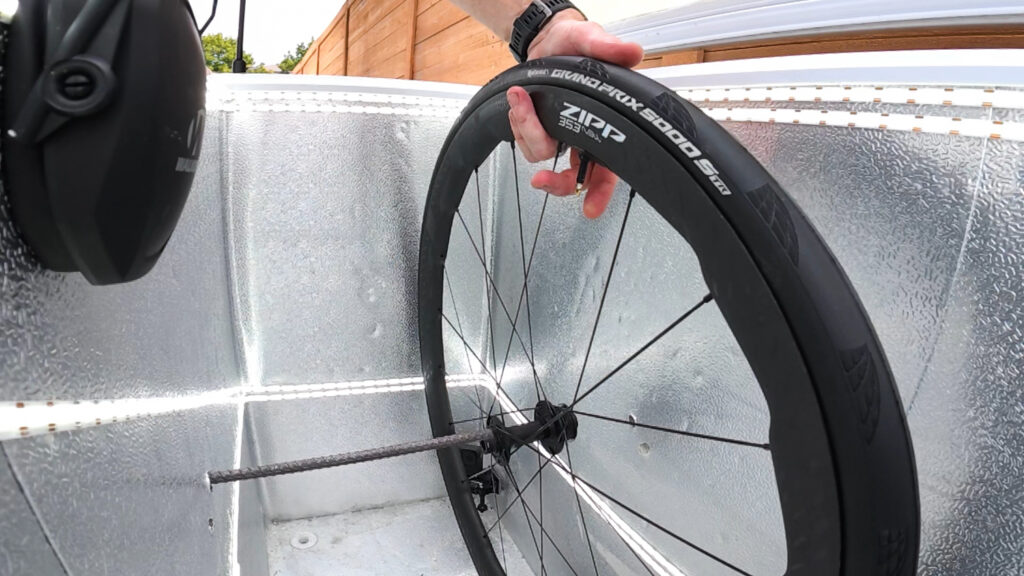
We wanted to test a range of tires. We tested mostly hookless wheels, but we did a hooked wheelset as well. We made sure we had at least one tire from each wheel manufacture. (So we tested CADEX tires on CADEX wheels, Zipp tires on Zipp wheels, etc.) We also tested a couple of the most popular tires on the market. That included Continental’s 5000 and Aero 111. We also tested Challenge Tires because Zipp wouldn’t approve them because they were “too hard to get on the rim.” (I get it – those tires can be a pain in the ass if you don’t know how to install them, but come on, you can install them.)
Let’s continue.
WHEELS
| FRONT WHEEL | INNER RIM WIDTH |
|---|---|
| CADEX 36 WHEELS | 22.4 mm |
| ZIPP 358 NSW | 25 mm |
| ENVE 3.4 SES | 25 mm |
| Reserve 63 ( HOOKED ) | 25.4 mm |
TIRES
| TIRE | SIZE |
|---|---|
| Challenge Strada | 30 |
| ENVE Race Day | 29 |
| Grand Prix 5000 S TR | 25 |
| Grand Prix 5000 S TR | 28 |
| Aero 111 | 29 |
| GOODYEAR EAGLE F1 R Z29 AERO | 29 |
| CADEX RACE TIRES | 25 |
| CADEX RACE TIRES | 28 |
| Vittoria Corsa Pro | 28 |
RESULTS
Disclaimer: We are not telling anyone that you SHOULD do this. We are not telling anyone that we know better than the manufacturers. All we are doing is showing people what, if anything, happened when we did these tests ourselves at home with a compressor, simple gauge, along with an older freezer we converted into a homemade blow off chamber.
Also a note: CADEX claims they take their tire tests all the way up to 150 PSI, so that is why we did the same. Keep in mind they do this ONLY for CADEX tires on CADEX wheels.
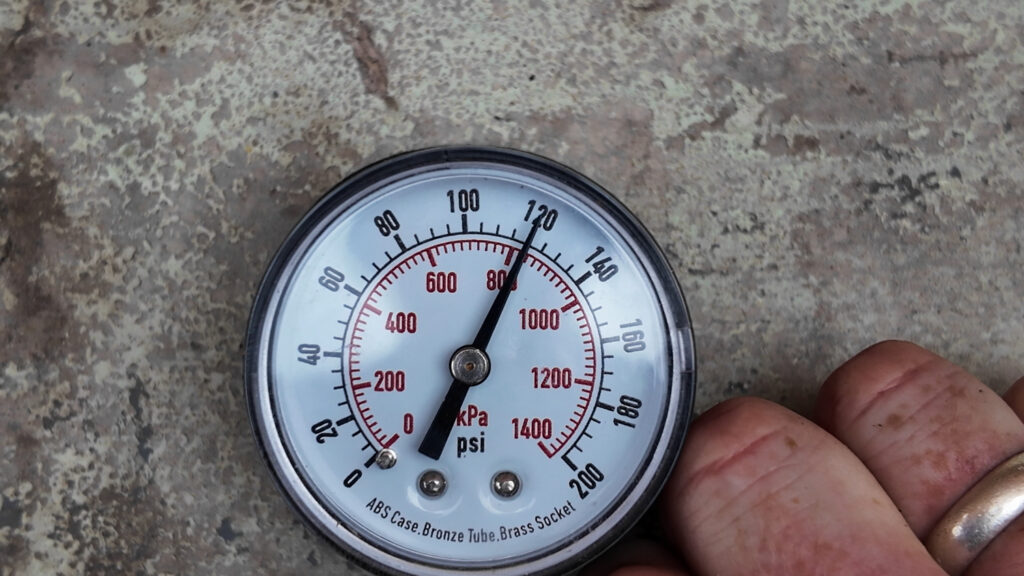
CADEX 36 WHEELS
| TIRE | PSI | BLOW OFF |
|---|---|---|
| Challenge Strada | 118-120 | No |
| ENVE Race Day | 118-120 | No |
| Grand Prix 5000 S TR | 118-120 | No |
| Grand Prix 5000 S TR | 118-120 | No |
| Aero 111 | 118-120 | No |
| GOODYEAR EAGLE F1 R Z29 AERO | 118-120 | No |
| CADEX RACE TIRES | 118-120 & 150 | No |
| CADEX RACE TIRES | 118-120 & 150 | No |
| Vittoria Corsa | 118-120 | No |
ZIPP 353 NSW
| TIRE | PSI | BLOW OFF |
|---|---|---|
| Challenge Strada | 118-120 | No |
| ENVE Race Day | 118-120 | No |
| Grand Prix 5000 S TR | 118-120 | No |
| Grand Prix 5000 S TR | 118-120 | No |
| Aero 111 | 118-120 | No |
| GOODYEAR EAGLE F1 R Z29 AERO | 118-120 | No |
| CADEX RACE TIRES | 118-120 & 150 | No |
| CADEX RACE TIRES | 118-120 & 150 | No |
| Vittoria Corsa | 118-120 | No |
ENVE SES 3.4
| TIRE | PSI | BLOW OFF |
|---|---|---|
| Challenge Strada | 118-120 | No |
| ENVE Race Day | 118-120 | No |
| Grand Prix 5000 S TR | 118-120 | No |
| Grand Prix 5000 S TR | 118-120 | No |
| Aero 111 | 118-120 | No |
| GOODYEAR EAGLE F1 R Z29 AERO | 118-120 | No |
| CADEX RACE TIRES | 118-120 & 150 | No |
| CADEX RACE TIRES | 118-120 & 150 | No |
| Vittoria Corsa | 118-120 | No |
RESERVE 63
| TIRE | PSI | BLOW OFF |
|---|---|---|
| Challenge Strada | 118-120 | No |
| ENVE Race Day | 118-120 | No |
| Grand Prix 5000 S TR | 118-120 | No |
| Grand Prix 5000 S TR | 118-120 | No |
| Aero 111 | 118-120 | No |
| GOODYEAR EAGLE F1 R Z29 AERO | 118-120 | No |
| CADEX RACE TIRES | 118-120 & 150 | No |
| CADEX RACE TIRES | 118-120 & 150 | No |
| Vittoria Corsa | 118-120 | No |
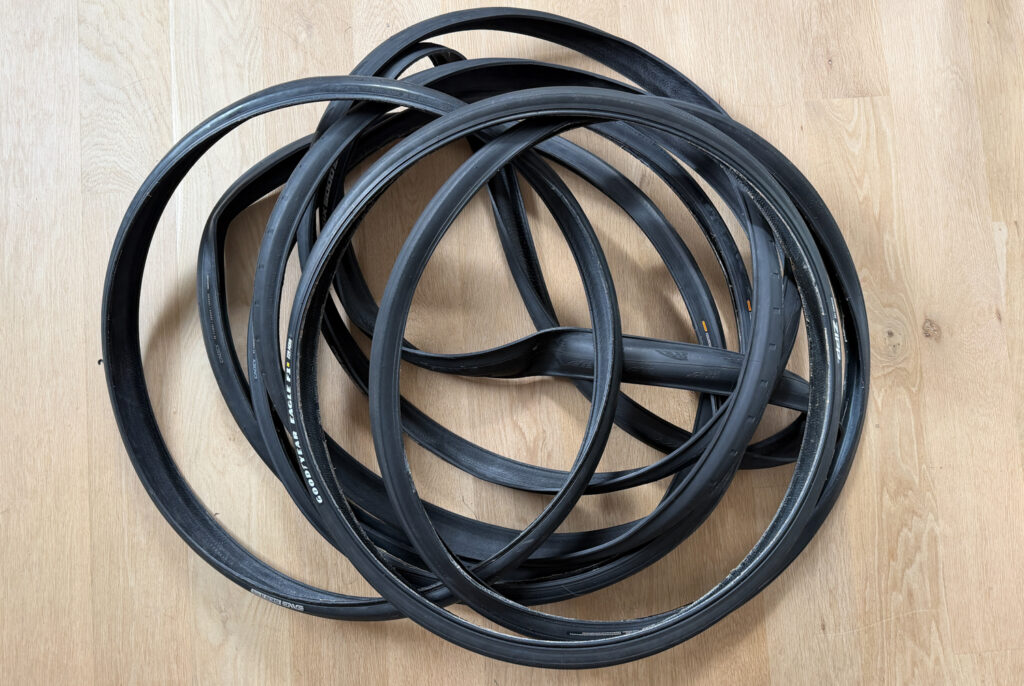
That’s it folks. That is round #1
We have completed round #2 (riding the tires), and that will come out sometime next week.
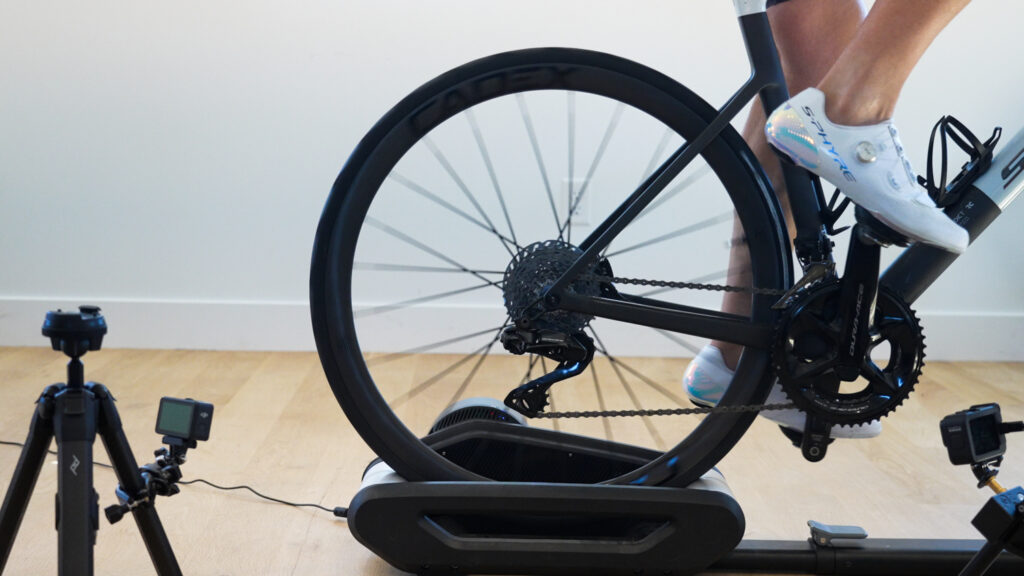
Let me be clear, we take safety very seriously here at Slowtwitch. We believe in honest reporting and opinions. What we see here is a chance to provide more education about this technology – from hooked, to tubeless, to hookless. Just like we see an opportunity through tests like these, we also see the chance to educate people on how can change a flat. We are doubling down on educating athletes about the things we feel are important.




I appreciate the testing, but I wonder how the results would differ if you were able to simulate the sharp increase in pressure that would occur with a hard impact and the tire near its maximum allowable pressure. Not sure how you would test that.
I also echo that question.
Generally, it is not results from a lab, and a static no-sealant pump fest which will sway me. I understand the logistical challenge but these tests should be done with sealant because that is, without a single exception, the system that riders will use out on the road. the system being tested is not a match to what riders use, I’m not sure how or why the brands accept that protocol. no matter how far you take these tests, not having sealant will be an asterisk to me. that being said…the results are surprising and i really appreciate the testing. looking forward to the next installment!
We did that in our riding tests…are at least we tried to do something to that use case.
I often use to think that about sealant as well. Then the more I thought about it sealant is one of those things, that honestly can actually keep a tire on ( assuming that a rider seats the tire and lets it sit for a day or two before riding) if you use tubeless set ups you are very much aware of the thin line of dried sealant that sticks to the sidewall. I feel like it if was really important everyone would do it including the ETRTO.
Looking forward to the results.
Just making sure @marcag @TRIPRO don’t miss this.